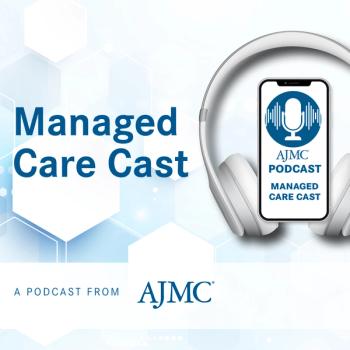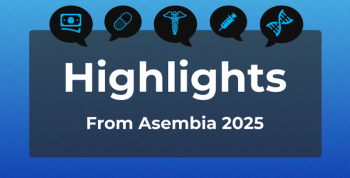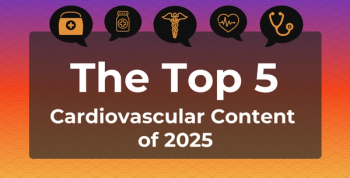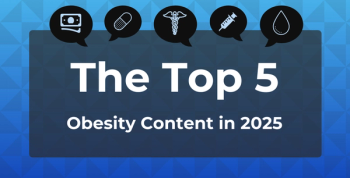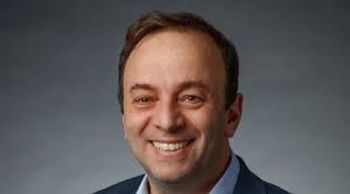
Practical Considerations for AI in Community Oncology

Key Takeaways
- Artificial intelligence (AI) has evolved to proactively address complex questions, identifying care gaps and enhancing patient care through multimodal data processing.
- Partnerships across the health care ecosystem, including payers and providers, are crucial for maximizing AI's value in oncology.
Artificial intelligence (AI) transforms oncology by enhancing decision-making, improving patient care, and streamlining operations, while addressing challenges in data accuracy and equity, said speakers at the Tennessee Oncology “Tech Innovations in Community Oncology."
Can artificial intelligence (AI) really make life better for an oncologist in day-to-day practice? Questions about AI accuracy, how to adopt technology, and who pays are consequential, given the disappointment that practices experienced with the rise of electronic health records (EHRs).
Leaders from Tennessee Oncology spent an evening examining these and other questions on June 19, 2025, with the meeting, “Tech Innovations in Community Oncology.” Cochairs were Samyukta Mullangi, MD, MBA, senior medical director at Thyme Care and medical oncologist at Tennessee Oncology; and Larry Bilbrey, senior director of digital innovation at OneOncology. The event was presented with Don Sharpe of Oncollogee at The Hermitage Hotel in Nashville, Tennessee.
Mullangi moderated a panel offering different perspectives on whether AI makes sense now for community oncology. Panelists were:
- Jan Witowski, MD, PhD, CEO and cofounder, Ataraxis AI, which uses biomarkers to assess how cancer will evolve to predict outcomes based on a given treatment,
- John Fox, MD, MHA, senior director, Market Access, Illumina, which develops tools for genomic sequencing and has partnered with Tempus AI to create next-generation NGS, and
- Hassan Naqvi, PhD, senior director, Value Based Partnerships, AstraZeneca, which develops outcomes-based agreements, including incorporation of PROs.
To open the discussion, Mullangi asked the panelists to discuss what it would look like to have AI as a copilot in oncology practice.
The value of AI in practice today stems from how the technology has evolved, Witkowski said. AI has moved from a reactive phase to a proactive one, where it can answer more difficult questions—and do so with less handholding. Molecular testing could answer a single question; Ataraxis uses multimodal digital data, which not only finds the answers but also selects the questions. “The big shift is that you no longer have to tell it exactly what you're looking for," he said.
Modern AI can process multiple data sources, he said, which can identify care gaps by automatically checking recent papers and flagging National Comprehensive Cancer Network (NCCN) updates without specific prompts.
With this in mind, Naqvi said, there’s recognition at AstraZeneca that maximizing the value of AI requires not just 1-to-1 relationships with technology companies but partnerships across the entire healthcare ecosystem: payers, providers, and policy makers. Community oncology practices are essential to this process, since they provide most patient care. “So, from an AI perspective, a pharma company and community oncology see their interests come together, which is maximizing the impact on the patients.”
AI has great potential to free up physician time for high-value tasks. But getting there means equitably distributing the technology, he said.
“One aspect that really holds promise for making AI generally available and generally useful is the democratization of computing power,” he said. Instead of individuals laboring over data to gain insights, computing power performs these tasks.
Today’s AI offers solutions for a better patient experience, Naqvi said, citing work by Jonathan Chen, MD, PhD, of Stanford, who trained an AI system on thousands of patient messages that can now flag the most urgent ones,
Getting the different players in health care aligned from a business perspective will speed AI’s reach, he said. “We're all kind of swimming in the same lanes—how do we all come together and make that possible? And that's where this revolution in infrastructure enablement [is] going to come along and help put those pieces together,” Navqi said.
Fox drew parallels between AI’s potential and the unfulfilled promise of EHRs, which he said did a good job of aggregating data but did not necessarily help physicians care for patients. “My job is to enable physicians to provide better care for their patients, and that's probably what AI is intended to do,” he said. “The promise of AI is to take that data and that information that's been generated and create knowledge and wisdom in that pyramid to help take better care of patients.”
It's not surprising, he said, that the early uses of AI have focused on operational efficiencies. “But the real question,” Fox said, “is what will physicians do with all this extra time?”
Can AI observe different practice patterns and identify where variations in care lead to poor outcomes? And, Mullangi asked, can AI do this across both high-resource and low-resource settings? Fox said the first step is to do more to track basic quality metrics, such as genomic testing rates for non-small cell lung cancer. Without this, he said, “We don't know for the billions of dollars that we spend on drugs today, which ones are the most effective" for first-line treatment of multiple myeloma or third-line treatment of colorectal cancer.
AI has the potential to aggregate data and answer these questions. “I think that’s where the real potential is,” Fox said.
An audience member asked how well AI can distinguish between different patient populations, noting that cancer presentations—and treatment decisions—are not the same for patients in their 20s and those in their 70s. Concerns about biases in AI abound, but Naqvi explained how the technology can also reveal them. AI systems once offered different recommendations for the same chest pain symptoms: emergency care for men with chest pain but painkillers for women, highlighting historical biases that were occurring in practice. “That’s where the human is going to be invaluable,” he said.
Witkowski was more optimistic that today's large AI datasets could help answer questions with greater accuracy, thanks to continuous updates based on recent patient outcomes. EHR integrations remain imperfect, he said, but things have come a long way in 20 years. “In the next 5 years, you are going to start seeing tools that are not just pathways based and processing, listing NCCN guidelines and then mapping it to patients' data pulled from the [EHR], but can actually train models against true outcomes.”
An audience member recalled that an effort by the American Society of Clinical Oncology to move from manual chart reviews to electronic data extraction caused reporting of cancer stage to fall from 100% compliance to 27%. Quality of care had not declined, but AI could not handle the job. Unless everyone reports data correctly, he said, oncology faces a “garbage in, garbage out” scenario.
Naqvi agreed and said data standardization remains a challenge across institutions. As AI improves, however, it will reduce operational costs, and inertia toward adoption will fall away. Payers, he said, should lead the way in funding a shift to AI.
Which raises the issue: who benefits from AI?
Fox said this is an important question, pointing to the opportunity for AI to make head-to-head comparisons among newer treatments while clinical trials test against the standard of care. But audience members asked whether AI was reliable enough for this task—and whether pharmaceutical companies could influence inputs that affect decision-making.
Is relying on AI recommendations giving power to a machine? “That’s not medicine,” one physician said.
Naqvi said AI must remain a tool, nothing more; only physicians have clinical context to make decisions. How AI is checked for accuracy and who makes these decisions will be important questions in which everyone has a stake. “How do you validate who validates that information?” he asked. “The answer, from my perspective, is that it’s all of our responsibility, and so that's why we need to start thinking like consortiums of the health care ecosystem.”
Newsletter
Stay ahead of policy, cost, and value—subscribe to AJMC for expert insights at the intersection of clinical care and health economics.

